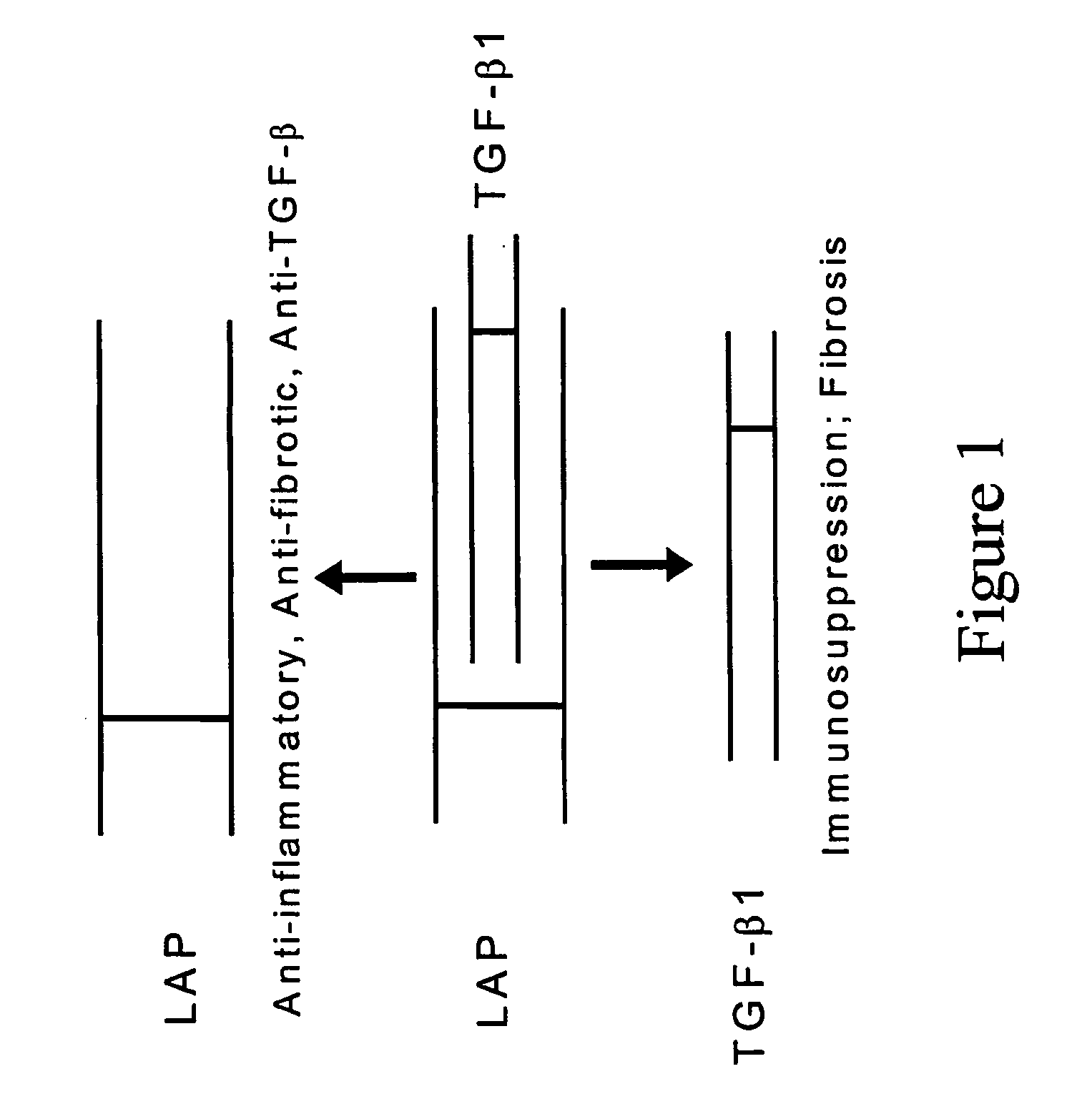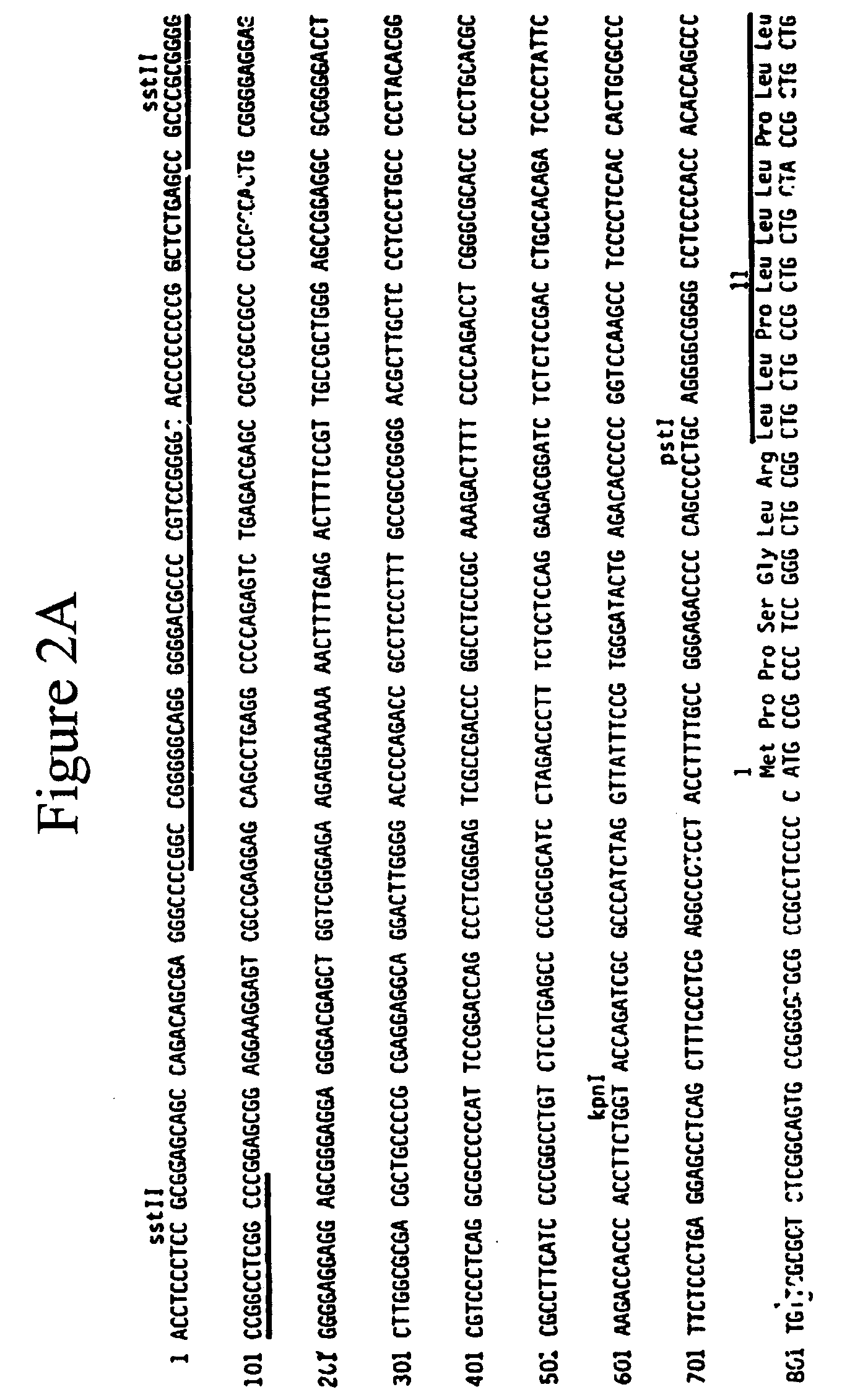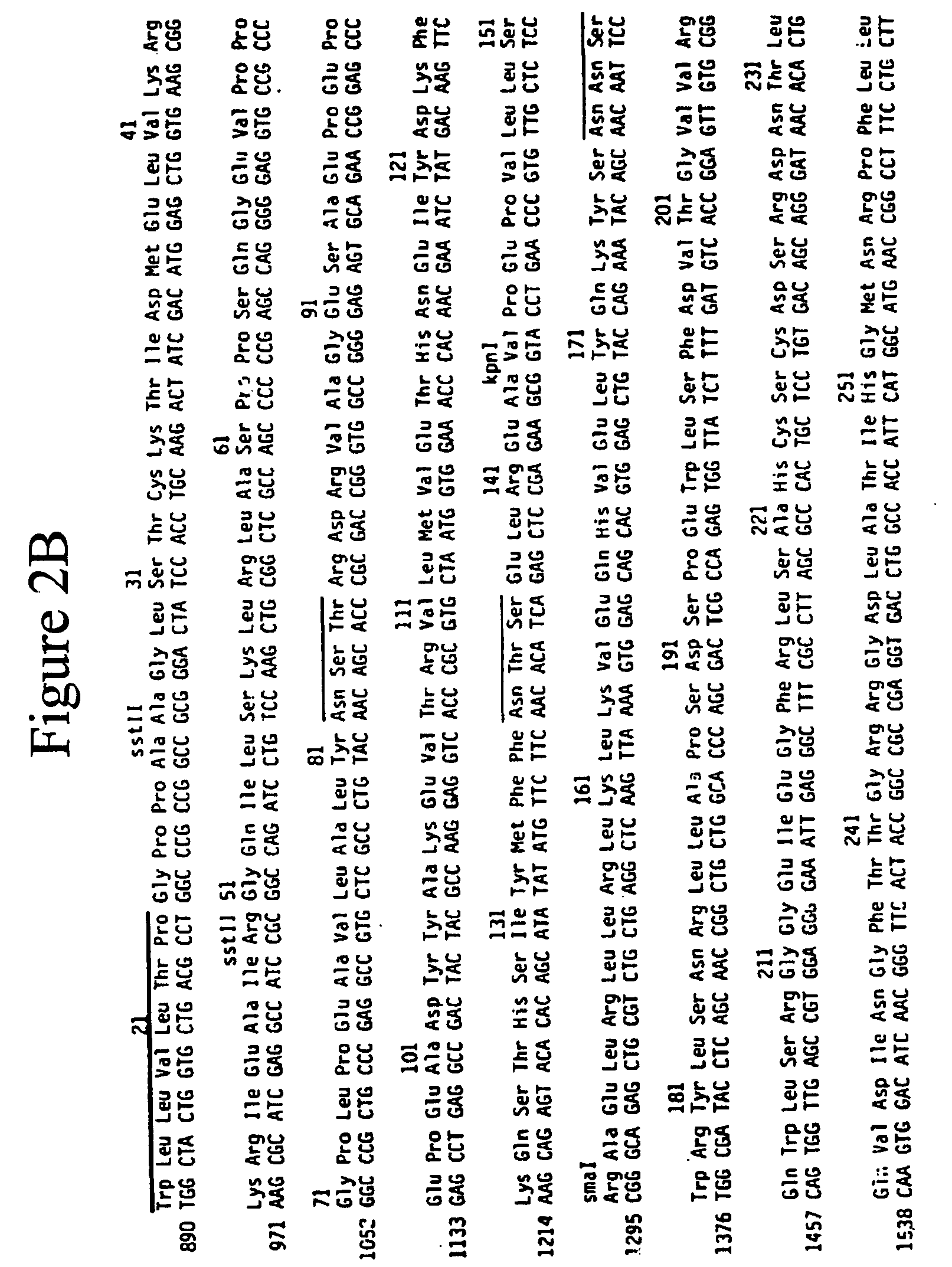Methods and reagents for treating inflammation and fibrosis
a technology of fibrosis and reagents, applied in the field of methods and reagents for treating inflammation and fibrosis, can solve the problems of severe health effects, severe tissue damage and possibly death of the affected individual, and ineffective treatment, so as to reduce or control inflammation and reduce inflammatory activity.
- Summary
- Abstract
- Description
- Claims
- Application Information
AI Technical Summary
Benefits of technology
Problems solved by technology
Method used
Image
Examples
example 1
Anti-Inflammatory Activity of LAP
[0081] A study was done to determine if LAP had in vivo anti-inflammatory properties. The study determined whether LAP could inhibit a delayed type hypersensitivity reaction (DTHR), a type of cellular mediated immune reaction. The assay used involved transfer of syngeneic splenocytes from cardiac allograft rejector mice DBA / 2 to C57Bl / 6 recipients (DBA / 2→C57Bl / 6 transfer) between 30-60 days post transplant. For this assay, syngeneic splenocytes from the transplanted mice, plus subcellular DBA / 2 alloantigen, were injected into the pinnae of recipient mice. The assay also included injections as above, also including 5 ng of porcine TGF-β or 10 pg of human LAP. Changes in ear thickness were measured both before injection and 24 hours after injection using a dial thickness gauge (Swiss Precision Instruments) as a measure of DTHR.
[0082] As is known to occur, the transfer caused a DTHR as indicated by the increase in ear thickness of the mice. As is also...
example 2
LAP Inhibition of the Signaling Activity of TGF-β
[0084] A study was done to determine if LAP inhibited the signaling activity of TGF-β, independent of binding and sequestering TGF-β, as shown in FIG. 1. It is known that when active TGF-β signals through TGF-β receptors, certain transcriptional promoters are regulated. One such promoter is the promoter regulating plasminogen activator inhibitor-1, a protein that promotes fibrin blood clot formation or inhibits fibrin clot dissolution. In the study, TMLC cells were used. TMLC cells are transformed mink lung epithelial cells that contain plasminogen activator inhibitor-1 promoter elements linked to a luciferase reporter gene. In these cells, TGF-β causes increases in luciferase gene expression and inhibition of TGF-β signaling activity causes decreases in luciferase gene expression.
[0085] In this study, TMLC cells were incubated with: recombinant human TGF-β1 (1 ng / ml) alone; or LAP (250 ng / ml) alone; or preincubated with LAP (250 ng / ...
example 3
LAP Inhibition of Signaling Activities of TGF-β that Contributes to Profibrotic Activity
[0087] A study was done to determine if LAP inhibited the signaling activity of TGF-β that resulted in stimulation of expression of specific extracellular matrix materials that contribute to the profibrotic activity of TGF-β. In this study, the ability of LAP to inhibit TGF-β activation of hydroxyproline, a component of collagen, was tested.
[0088] In this study, COS-7 cells were suspended in 10% fetal calf serum as a source of TGF-β. The cells were then spiked with either vehicle control alone for 72 hours (see lane labeled “NS COS7” in FIG. 10); or with 250 ng / ml recombinant LAP for 1 hour, the cells washed, then replaced with media containing 10% fetal calf serum for 72 hours (see lane labeled “1 hr LAP 250 ng / ml / was (72 h)” in FIG. 10. The cells were then harvested and assayed for hydroxyproline as described in the detailed methods:˜
[0089] 1000 μl of supernatants from the cells were placed i...
PUM
| Property | Measurement | Unit |
|---|---|---|
| hydrophobic | aaaaa | aaaaa |
| thick | aaaaa | aaaaa |
| concentrations | aaaaa | aaaaa |
Abstract
Description
Claims
Application Information
 Login to View More
Login to View More - R&D
- Intellectual Property
- Life Sciences
- Materials
- Tech Scout
- Unparalleled Data Quality
- Higher Quality Content
- 60% Fewer Hallucinations
Browse by: Latest US Patents, China's latest patents, Technical Efficacy Thesaurus, Application Domain, Technology Topic, Popular Technical Reports.
© 2025 PatSnap. All rights reserved.Legal|Privacy policy|Modern Slavery Act Transparency Statement|Sitemap|About US| Contact US: help@patsnap.com



